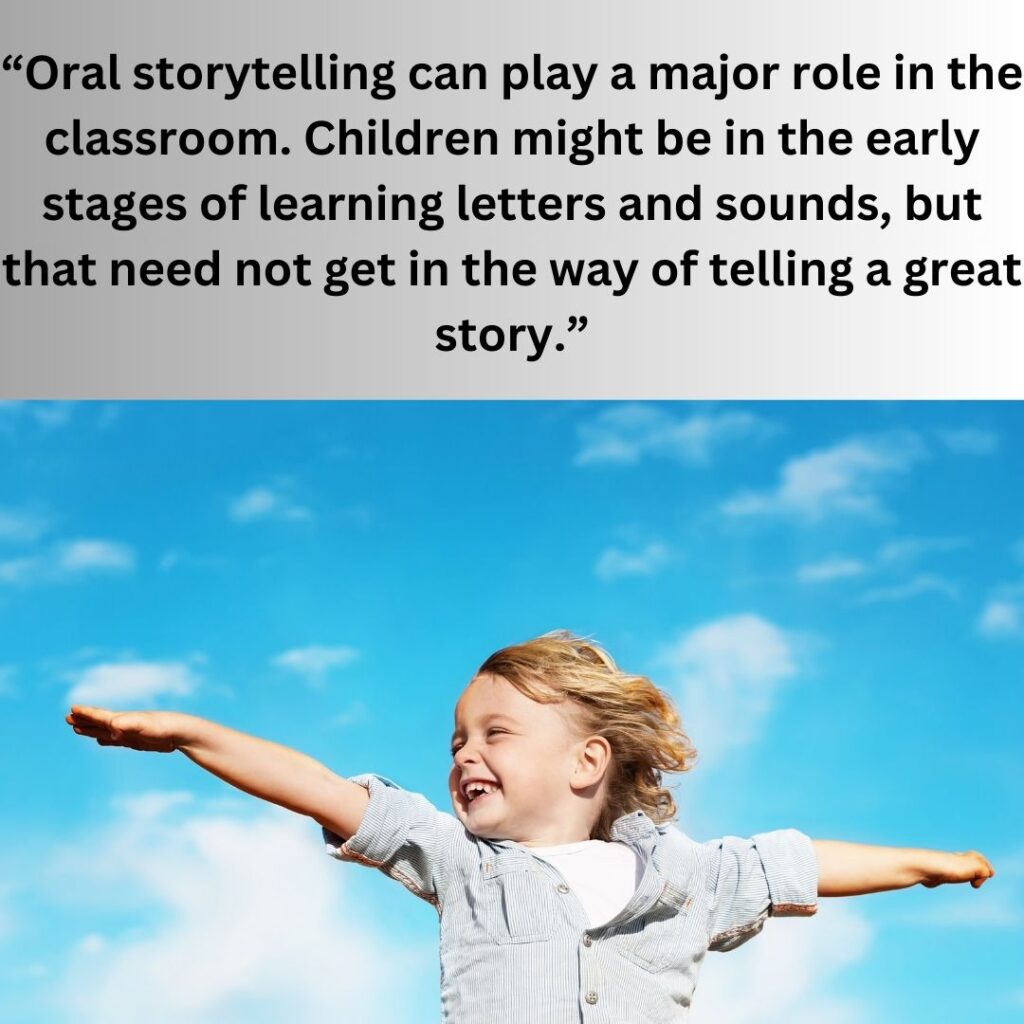“Mrs. Garrett, I used speech bubbles just like Mo did.”
“Mrs. Garrett, I used an onomatopoeia just like Donald Crews did. Beep! Beep!”
“Mrs. Garrett, I made my words big like Zach did in his Cat book.”
These are powerful and precious words in my kindergarten classroom. The power lies in the understanding that these students are authors and illustrators just like the ones we know from our “real books.” I want them to see themselves as authors and live into that identity. I want them to understand what a writer is and what a writer does.
This understanding is my number 1 goal as an early educator of writing. I want my students to see themselves as having a voice and stories to tell; that their words are as important to our world as the authors we see every day in the books we read. That these authors were once young children with a voice and a story to tell, just like them.
Oral Storytelling
One of the first things that I do as an early educator is narrate my student’s day. We tell stories all the time. I want my students to see themselves as storytellers. Oral storytelling can play a major role in the classroom. Children might be in the early stages of learning letters and sounds, but that need not get in the way of telling a great story. You can allow time for storytelling throughout the day, retelling a shared experience, like a field trip or the tornado drill, etc. Encourage students to retell a story multiple times to a partner before they go out to write or draw. This is powerful.

Read Alouds
Another way to make this happen are to infuse read alouds throughout our day with a variety of fiction and nonfiction books. As we discuss these read alouds, have pictures of these authors with a short note or something of interest about them. This simple activity makes the author more than just a name. When I share that Mo Willems, author of Knuffle Bunny, was inspired by his own daughter’s adventures, students see his picture and hear his story and Mo becomes real to them. We can now jumpstart many conversations about Mo and his writing, his purposes, his craft, and ideas.
As we do these read alouds, I often discuss with students and work to collaboratively notice and name particular things that authors do, chart them, and try to set a purpose for why they do this. Then, when a kindergarten author tries out a particular move, we add their picture to our chart and have them share why they chose to use that move.
All throughout the year, we are finding ways to get students to realize that they are authors just like the ones in the books we read and that their stories are important and add value to our world.
Strategies to Try
- Adding in some storytelling opportunities throughout your day.
- Pictures and note of authors from your favorite classroom books (grow this all year long).
- Adding an “About the Author” page in students’ writing books.
- Create a go-to space for “classroom published” student made books to go right alongside classroom book favorites or create a display of specific craft moves with published texts as well as student made books.
- Talk about craft moves/ ideas with the author’s first name to make it a personal connection. Example: “Zach used speech bubbles just like Mo does with his books.”
- Add my very favorite phrase to your everyday academic vocabulary. “You’re the kind of kid (author) who did_________ just like __________ to show___________.
Ex. “You’re the kind of author who used bold words just like Steve Jenkins to show that word is important.
My hope is you will find ways to engage your young writers that enable them to see themselves as having a voice, a story to tell and that they too are authors who can impact our world.



